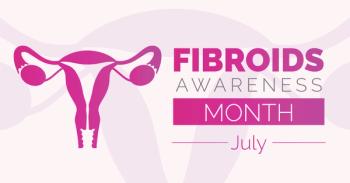
Using Diagnostic Tools for the Management of Uterine Fibroids
Mauricio Abrão, MD, and Jessica A. Shepherd, MD, MBA, FACOG, comment on the use of diagnostic tools and the importance of imaging in approaching the treatment of uterine fibroids.
Episodes in this series

Mauricio Abrão, MD: For us to discuss details about the treatment options, it’s important to talk about imaging for the diagnosis of fibroids, because the decision on how to treat starts from a good diagnosis. We’ve had great improvements of the ultrasound and MRI. What do you think about what we have now, Jessica?
Jessica A. Shepherd, MD, MBA, FACOG: As far as treatment goals and looking at imaging, I always send every patient for an ultrasound. I love when they come from a family practitioner or an internal medicine physician who sends them with an ultrasound. That’s very helpful. In past years in my practice, I’ve seen that MRI has had a good impact on helping them understand and see, and also come up with a treatment-management plan. There are definitely patients who have had an ultrasound for something else, maybe a GI [gastrointestinal] issue, where fibroids are noted on the ultrasound or MRI. How do we use that imaging and information to help guide patients who may have had asymptomatic fibroids and now know that they have fibroids?
With patients who have symptomatic issues with their fibroids, how do we make sure they understand the depth and breadth of the disease process and what treatment options are available for them from an imaging standpoint? Because quite frankly, I find that when patients see it on imaging, that puts them into another realm of fear to some degree. How do we mitigate that? How do we allow them to see that the imaging is very helpful for a physician but can actually help us more when it comes to a plan of medical or surgical management or a combination of both?
Mauricio Abrão, MD: I agree. One very relevant thing is that there are new protocols for us to differentiate fibroids from sarcoma by imaging, mainly by MRI, for example. This is important for us to define the treatment. The improvement of the imaging is something to be mentioned in a discussion like this because of its beneficial impact on treatment.
Transcript Edited for Clarity
Newsletter
Get the latest clinical updates, case studies, and expert commentary in obstetric and gynecologic care. Sign up now to stay informed.













